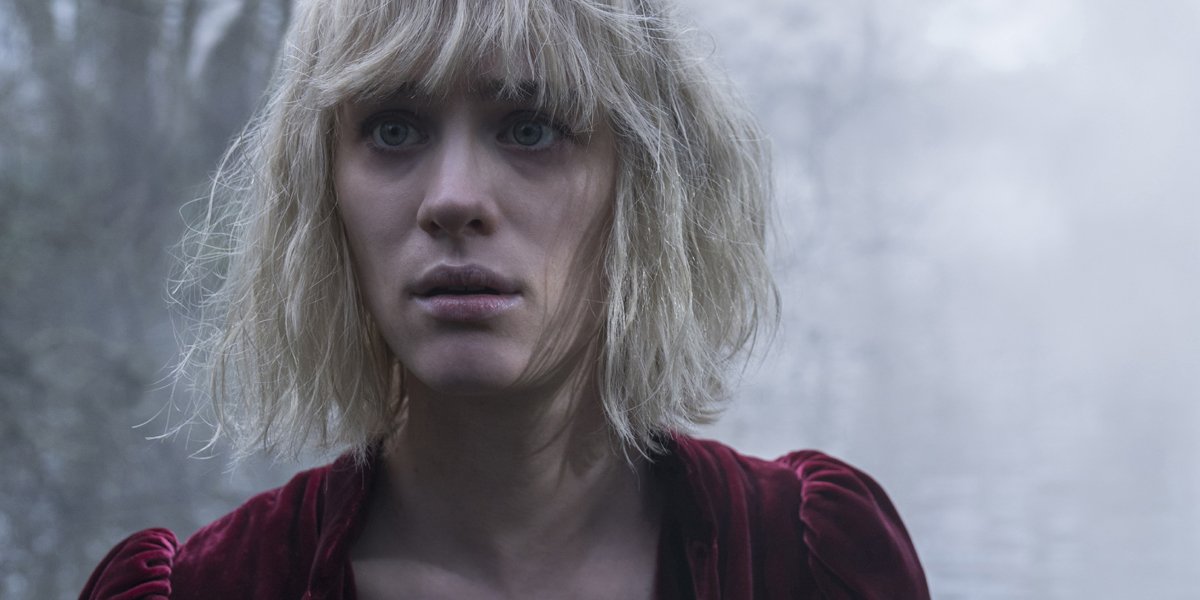How Mackenzie Davis’ Physical Transformation In The Turning Affected Her Performance

In the making of Floria Sigismondi’s The Turning, Mackenzie Davis had the opportunity to execute a very important and detailed character arc. Playing Kate, the governess of Bly Manor hired to take care of the orphan siblings who live there, she takes a ride typically known as a decent into madness as she is haunted by ghosts and terrible nightmares. Needless to say, she doesn’t appear quite as put together at the end of the film as she does at the beginning, and it’s an interesting physical transformation that I recently got to discuss with the actress.
I had the opportunity to interview Mackenzie Davis during the recent domestic press day for The Turning in Los Angeles, and among the topics discussed was the way in which Kate physically changes over the course of the film. As I learned from the conversation, plotting out the progression of her appearance was a part of the process she very much enjoyed, but she added that the production was also aided in a particular way by the film’s intimate setting:
The way that Kate looks from scene-to-scene in The Turning is obviously dependent on where she is in the story, as she looks quite a lot more sleep deprived and manic towards the end compared to the days shortly after her arrival at Bly Manor. Given its significance, it was something that the make-up department had to keep track of, and Mackenzie Davis explained that it was an element of the production she enjoyed being part of. Said Davis,
To plan it and we all had like a document and a planning thing, and we could be, 'Oh, okay, this is this scene. So like my nails would be bleeding here.' It was really fun.
Truly, though, it wasn’t all that hard to track how far along Kate was in any given scene. While most movies are forced to shoot scenes out of order, executing a schedule that is as economical and efficient as possible, that wasn’t an issue for The Turning. Almost the entire movie was filmed in and around an estate in Ireland, and the simplicity of the location shooting ultimately meant that they had the ability to work in sequence.
Describing the opportunity as a “luxury,” Mackenzie Davis noted that it was definitely beneficial to her performance that she could instantly reflect on previous scenes to motivate her approach with each new sequence, and could easily chart Kate’s downward spiral. She explained,
We shot as much in sequence as possible. Luckily, because so much of it takes place in this house we had the luxury of the first scene we shot was me arriving at the house, and we moved as much as possible in sequence through the movie – which is such a cool experience and such a gift, especially in something like this where from like one minute to the next some enormous thing could have happened to change her mentality and her physicality. So it was nice to be able to put that together slowly.
Shooting in sequence isn’t something that actors get the opportunity to do very often, and in this case it’s easy to see why it would be a huge boon. It takes a certain amount of work for a performer to figure out their particular mental state in a scene while sorting out everything they’ve previously shot, and that’s definitely true when a character is experiencing a very well-defined arc. It was ultimately an advantage that Mackenzie Davis felt she could take advantage of, and the result is a really great performance.
You’ll be able to see Mackenzie Davis on the big screen, along with Finn Wolfhard and Brooklynn Prince, this Friday, as The Turning is opening in theaters nationwide. Go check it out, and stay tuned here on CinemaBlend for more from my interviews with the stars and director. To see what else is coming up in 2020, be sure to check out our release calendar.
Your Daily Blend of Entertainment News

Eric Eisenberg is the Assistant Managing Editor at CinemaBlend. After graduating Boston University and earning a bachelor’s degree in journalism, he took a part-time job as a staff writer for CinemaBlend, and after six months was offered the opportunity to move to Los Angeles and take on a newly created West Coast Editor position. Over a decade later, he's continuing to advance his interests and expertise. In addition to conducting filmmaker interviews and contributing to the news and feature content of the site, Eric also oversees the Movie Reviews section, writes the the weekend box office report (published Sundays), and is the site's resident Stephen King expert. He has two King-related columns.
